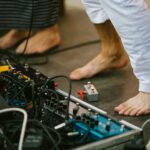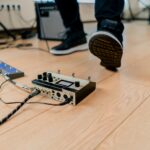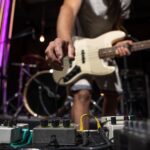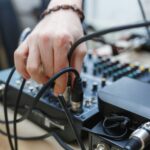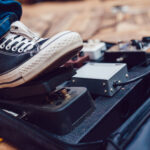I’ve always been curious about the best placement for my EQ pedal in my pedal chain. After all, the pedal chain is the heart of the guitar rig, and each pedal’s position affects the overall sound and tone.
With so many options available, it can be overwhelming to determine the optimal location for your EQ pedal. In this article, I’ll share my insights on where to place EQ in your pedal chain.
Understanding the pedal chain is crucial to optimizing the sound quality of your guitar rig. The pedal chain is a series of guitar effects pedals connected in a specific order.
Each pedal affects the signal in a unique way, and the order in which the pedals are connected determines the overall sound. To achieve the desired sound, it’s essential to optimize the pedal order and placement.
EQ pedal placement fundamentals are the foundation of optimizing your pedal chain for sound quality. An EQ pedal can be placed in various positions in the pedal chain, depending on your desired sound.
The most common placement for EQ pedals is after the overdrive/distortion pedal and before the modulation effects, such as delay and reverb. However, the placement of the EQ pedal is subjective and can vary depending on the guitarist’s preference.
Check out these other posts:
Key Takeaways on Where Does EQ Go in Pedal Chain?
- Understanding the pedal chain is crucial to optimizing the sound quality of your guitar rig.
- EQ pedal placement fundamentals are the foundation of optimizing your pedal chain for sound quality.
- The placement of the EQ pedal is subjective and can vary depending on the guitarist’s preference.
Check out these other popular picks:
Understanding the Pedal Chain
As a guitarist, it is essential to understand the pedal chain and the order in which pedals should be placed. The pedal chain is the order in which your guitar signal passes through your pedals before it reaches the amplifier. This order is crucial because it affects the sound of your guitar.
Signal Chain Basics
The signal chain starts with the clean signal from your guitar. The clean signal is the original sound of your guitar without any effects. The first pedal in the chain is usually a tuner or a volume pedal. The tuner is used to tune your guitar, and the volume pedal is used to control the volume of your guitar.
The next pedals in the chain are usually the gain pedals. Gain pedals include overdrive, distortion, and fuzz pedals. These pedals add gain or distortion to your guitar signal. The order of these pedals depends on personal preference, but a common order is to place the overdrive pedal first, followed by the distortion pedal, and then the fuzz pedal.
After the gain pedals, the modulation pedals come next. Modulation pedals include chorus, phaser, flanger, and tremolo pedals. These pedals add depth and movement to your guitar signal. The order of these pedals should be chorus, phaser, flanger, and then tremolo.
Finally, the time-based effects come last in the chain. Time-based effects include delay and reverb pedals. These pedals add space and atmosphere to your guitar signal. The order of these pedals should be delay first, followed by the reverb pedal.
Effects Loop and Pedalboard
An effects loop is a feature found on some amplifiers that allows you to insert effects pedals between the preamp and power amp sections of the amplifier. This allows you to add effects to the sound of the amplifier. The effects loop should be used for time-based effects such as delay and reverb pedals.
When building a pedalboard, the order of the pedals is crucial. The order should be based on the signal chain. The pedals should be arranged in a way that makes sense and is easy to use. A common arrangement is to place the tuner or volume pedal first, followed by the gain pedals, modulation pedals, and then time-based effects.
Understanding the pedal chain is essential for any guitarist. The order of the pedals affects the sound of your guitar, and the order should be based on the signal chain. By arranging your pedals in a logical way, you can create a pedalboard that is easy to use and produces great sound.
EQ Pedal Placement Fundamentals
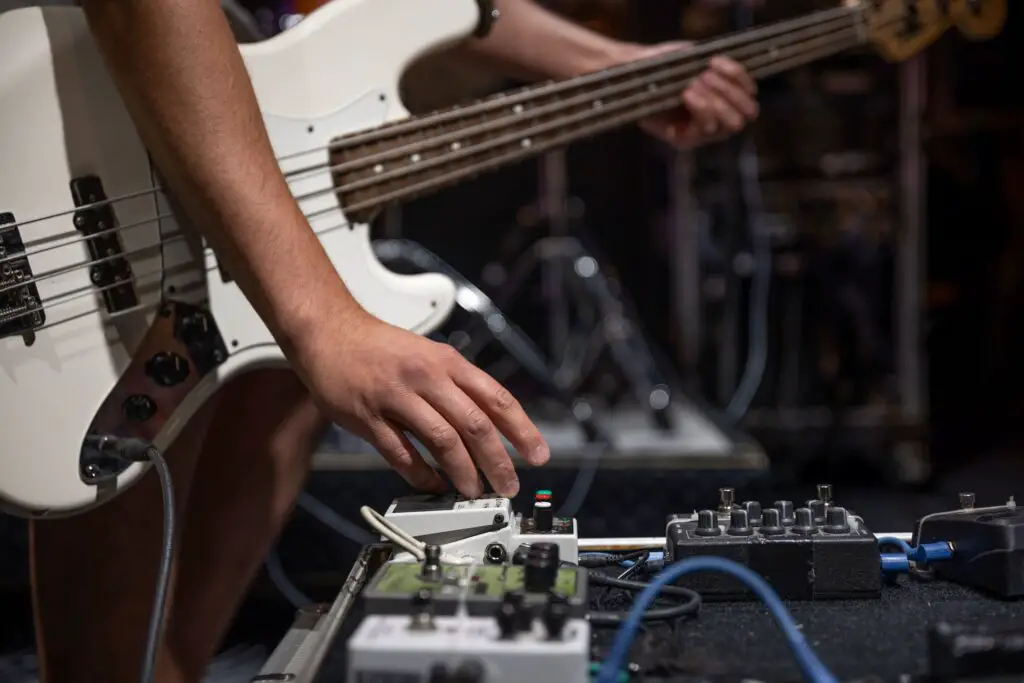
When it comes to pedal placement, there are a few fundamental rules that should be followed. EQ pedals are no exception. In this section, I will cover the essential placement rules for EQ pedals, including whether to place them before or after distortion pedals and how they interact with the effects loop.
Placement Rules
There are a few general rules that should be followed when placing EQ pedals on your pedalboard. First, EQ pedals should always be placed after any filter, wah, and pitch shifter pedals in your chain. This ensures that these pedals are not affected by the EQ and that the signal is filtered before it is EQ’d.
Second, EQ pedals are best placed after any utility pedals, such as noise gates or compressors. These pedals are designed to clean up your signal and control dynamics, and placing them before the EQ can affect their performance.
Finally, EQ pedals should be placed before any modulation or time-based effects, such as chorus, delay, or reverb. This ensures that the EQ affects the dry signal before it is modulated or delayed, resulting in a more natural and controlled sound.
EQ Before or After Distortion
One of the most debated topics when it comes to EQ pedal placement is whether to place the EQ before or after distortion pedals. The answer really depends on the type of distortion you are using and the sound you are trying to achieve.
If you are using a light overdrive or boost pedal, placing the EQ before the distortion can help shape the tone and add clarity to the signal. However, if you are using a heavy distortion or fuzz pedal, placing the EQ after the distortion can help tame any harsh frequencies and shape the tone of the distortion.
EQ and the Effects Loop
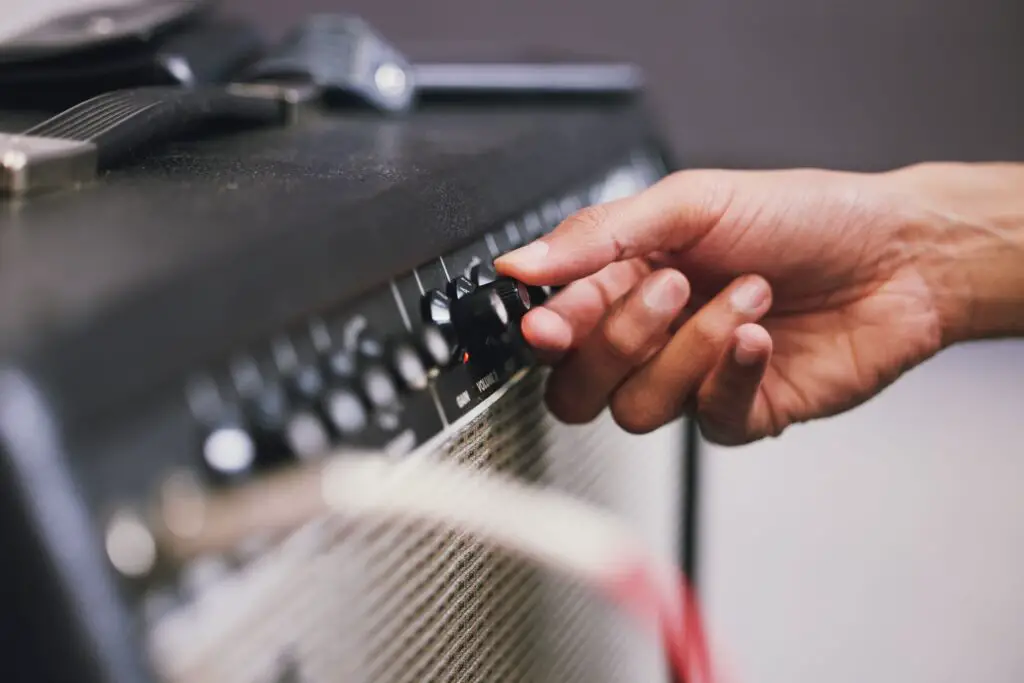
If your amplifier has an effects loop, you may be wondering where to place your EQ pedal. The answer is simple: it depends on what you want to achieve.
Placing the EQ in the effects loop allows you to EQ the signal after the preamp and before the power amp.
This can be useful if you want to shape the tone of your amp without affecting the sound of your pedals. However, if you want to EQ the sound of your pedals, you should place the EQ in front of the amp, before the effects loop.
EQ pedal placement is an essential part of creating your ideal pedalboard setup. By following these fundamental rules and experimenting with different placements, you can achieve the perfect tone for your playing style and musical genre.
Optimizing Pedal Order for Sound Quality
One of the most important factors in achieving great tone is the order in which you place your pedals. In this section, I’ll share some tips and best practices for optimizing your pedal order to get the best sound quality possible.
Gain Staging and Dynamics
When it comes to gain pedals like overdrive, distortion, and fuzz, it’s important to get your gain staging right. This means placing your pedals in the right order to achieve the right amount of distortion and sustain. Typically, you’ll want to place your gain pedals before any modulation or delay effects. This allows you to shape the sound of your guitar before adding any time-based effects.
Another important consideration is dynamics pedals like compression and EQ. These pedals can help you shape your sound and bring out the best in your guitar.
Generally, it’s best to place these pedals after your gain pedals and before your modulation effects. This allows you to fine-tune your tone and ensure that your guitar sounds its best.
Volume and Modulation Effects
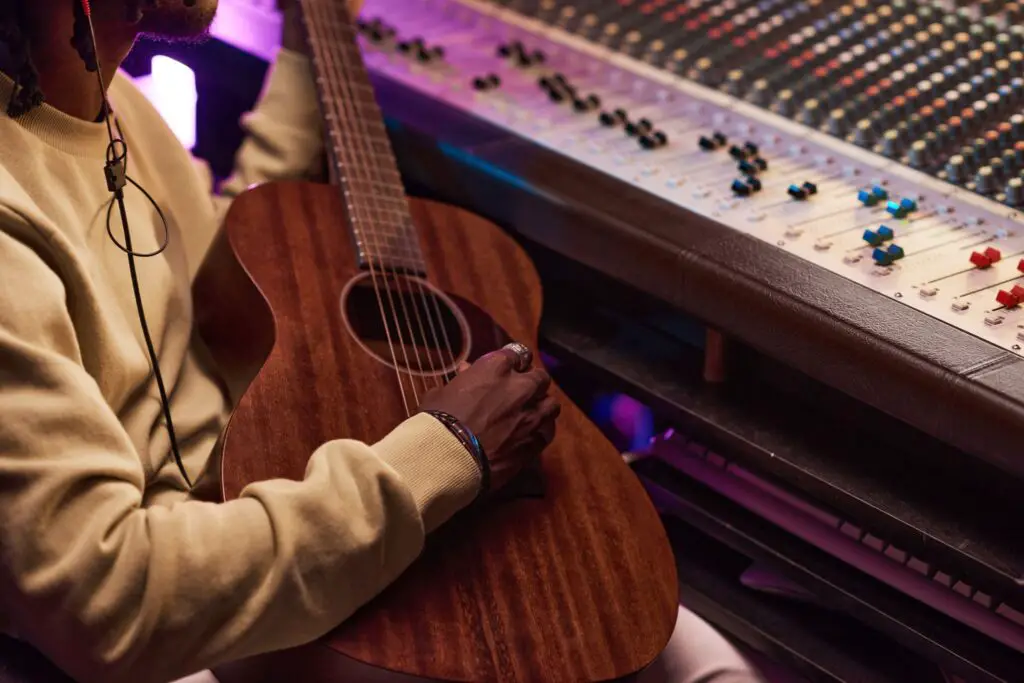
Once you’ve got your gain staging and dynamics pedals sorted, it’s time to move on to volume and modulation effects. These pedals can add a lot of depth and character to your sound, but they need to be placed in the right order to achieve the best results.
When it comes to volume pedals, it’s best to place them near the end of your signal chain. This allows you to control the overall volume of your sound without affecting the tone or character of your guitar.
Modulation effects like chorus, flanger, and phaser can add a lot of depth and character to your sound. These pedals work best when placed after your gain pedals and before your delay and reverb effects. This allows you to shape the sound of your guitar before adding any time-based effects.
Ambience: Delay and Reverb
Finally, it’s time to add some ambience to your sound with delay and reverb pedals. These pedals can add a lot of depth and dimension to your sound, but they need to be placed in the right order to achieve the best results.
When it comes to delay pedals, it’s best to place them near the end of your signal chain. This allows you to add a subtle echo to your sound without overwhelming the rest of your signal.
Reverb pedals, on the other hand, work best when placed at the very end of your signal chain. This allows you to add a sense of space and dimension to your sound without affecting the tone or character of your guitar.
By following these best practices for pedal order, you can optimize your signal chain for the best sound quality possible. Remember to experiment and try different combinations to find the perfect sound for your playing style and musical genre.
Advanced Considerations for Pedal Placement
When it comes to pedal placement, there are a few advanced considerations to keep in mind that can have a significant impact on your tone. In this section, I’ll cover two important factors to consider: buffer and true bypass, and pedal types and signal path.
Buffer and True Bypass
One of the most important considerations when it comes to pedal placement is whether your pedals are true bypass or have a buffer. True bypass pedals allow your guitar signal to pass through the pedal without affecting the tone when the pedal is turned off. On the other hand, pedals with a buffer will boost your signal and can help to prevent signal loss over long cable runs.
If you have a lot of true bypass pedals in your signal chain, you may experience tone loss due to the high impedance of your guitar signal. In this case, it can be helpful to add a buffer pedal to your chain.
However, if you have a lot of pedals with buffers, you may experience a loss of high-end frequencies in your tone. In this case, it can be helpful to use a true bypass looper to switch off the pedals with buffers when they’re not in use.
Pedal Types and Signal Path
The type of pedals you’re using can also have a significant impact on your tone. For example, overdrive and distortion pedals typically work best when placed before modulation effects like chorus and delay. This is because the modulation effects can smooth out the distortion and make it sound less aggressive.
Similarly, EQ pedals can be placed either before or after distortion pedals, depending on the sound you’re going for. If you want to shape your tone before adding distortion, place your EQ pedal before your overdrive or distortion pedal. If you want to fine-tune your tone after adding distortion, place your EQ pedal after your overdrive or distortion pedal.
When it comes to signal path, it’s generally a good idea to place your pedals in the order that they affect your tone. For example, you’ll typically want to place your wah pedal first in the chain, followed by your overdrive and distortion pedals, then your modulation effects, and finally your delay and reverb pedals. This will ensure that each pedal is affecting the tone in the way it was intended to.
Practical Tips for Pedal Chain Setup
Live vs. Recording Setups
When setting up a pedal chain, it is important to consider whether it will be used for live performances or recording sessions. In a live setup, it is crucial to maintain signal integrity and minimize noise and hum.
To achieve this, I recommend placing the EQ pedal towards the end of the signal chain, just before the amplifier. This allows for the EQ to shape the overall tone of the guitar while minimizing the effects of noise and hum.
On the other hand, in a recording setup, the placement of the EQ pedal can be more flexible. Depending on the desired effect, the EQ pedal can be placed before or after other pedals in the chain.
For example, placing the EQ pedal before a distortion pedal can result in a more aggressive and defined tone, while placing it after a modulation pedal can create a more atmospheric sound.
Maintaining Signal Integrity
Maintaining signal integrity is crucial to achieving optimal sound quality in a pedal chain setup. One common issue that can arise is feedback, which occurs when the sound from the amplifier is picked up by the guitar’s pickups and amplified again, creating a loop of sound.
To prevent feedback, I recommend placing the EQ pedal towards the end of the signal chain, just before the amplifier. This allows for the EQ to shape the overall tone of the guitar while minimizing the effects of feedback.
Another issue that can affect signal integrity is noise and hum. To minimize the effects of noise and hum, I recommend using high-quality cables and power supplies, as well as placing the EQ pedal away from other pedals that are known to produce noise, such as distortion and fuzz pedals.
When setting up a pedal chain, it is important to consider the specific setup, whether it is for live performances or recording sessions, and to prioritize maintaining signal integrity. By following these practical tips, you can achieve optimal sound quality and minimize any unwanted noise or feedback.
Frequently Asked Questions
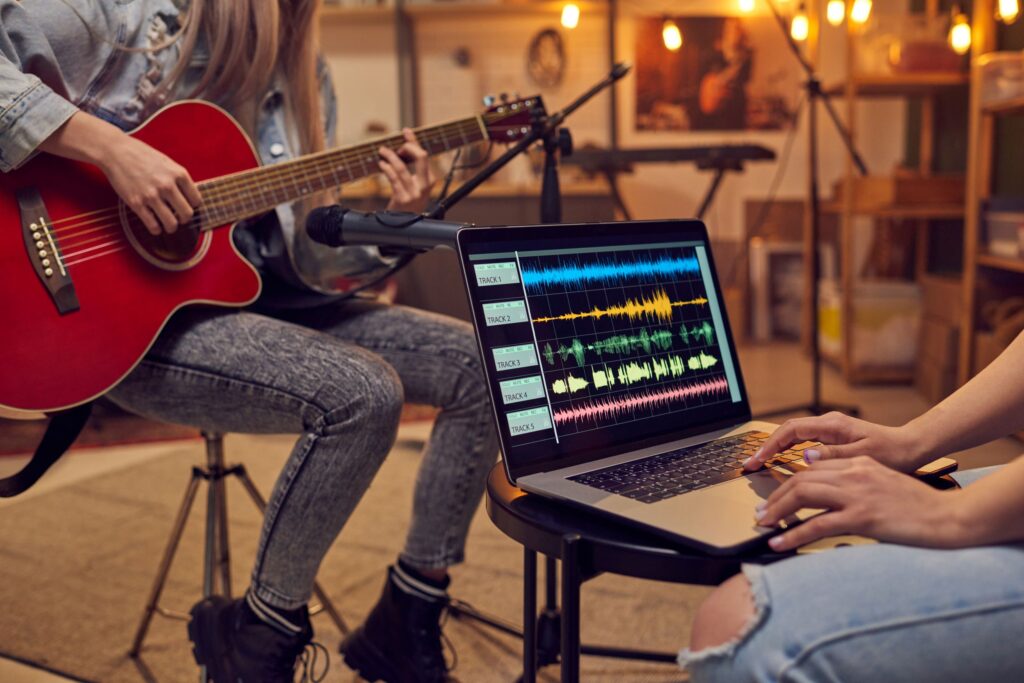
Should an EQ pedal be placed before or after a compressor in the signal chain?
The answer to this question depends on what you want to achieve. If you want to shape your tone before compression, place the EQ pedal before the compressor.
If you want to shape your compressed tone, place the EQ pedal after the compressor. Keep in mind that compressors can affect the way an EQ pedal responds, so experiment with different placements to find the right balance.
Is it better to run an EQ pedal in the effects loop or directly in the signal path?
This depends on your amp and the effects loop design. If your amp has a series effects loop, running the EQ pedal in the loop can be more effective. This is because the loop allows the EQ to affect the tone of the power amp section of the amp.
If your amp has a parallel effects loop, running the EQ pedal in the loop can be less effective. In this case, running the EQ pedal directly in the signal path may be better.
How does pedal order affect tone when placing an EQ pedal in relation to distortion?
Placing an EQ pedal before a distortion pedal can affect the way the distortion pedal responds. This can be useful if you want to shape your tone before distortion. Placing an EQ pedal after a distortion pedal can affect the way the distortion sounds. This can be useful if you want to shape your distorted tone.
Can an EQ pedal effectively shape tone when used after a wah pedal?
Yes, an EQ pedal can effectively shape tone when used after a wah pedal. The wah pedal can affect the frequency response of the guitar signal, and the EQ pedal can further shape the tone. Experiment with different placements to find the right balance.
What are the implications of placing an EQ pedal last in the pedal chain?
Placing an EQ pedal last in the pedal chain can be useful for shaping the overall tone of the guitar signal. This can be especially useful if you have a complex pedal chain with many different effects. Keep in mind that placing an EQ pedal last can also affect the way other pedals in the chain sound.
What is the optimal position for an EQ pedal when setting up a guitar pedal chain?
The optimal position for an EQ pedal depends on what you want to achieve. Experiment with different placements to find the right balance. Keep in mind that the placement of an EQ pedal can affect the way other pedals in the chain sound.

My name is Howard Matthews and I have been playing the guitar since I was knee-high. My parents like to joke that I was pulling the strings even before I was born. In fact, one of my earliest memories is sitting on the couch with my dad’s guitar, wreaking havoc on the chords.
Now, 40 years later, I can attest that I play them much better than I did back then. I have followed in the footsteps of both my parents – much to their delight – and have been the main guitarist in my band for the best part of three decades.
Music has always been my passion, and until recently my life has been so consumed with it that I haven’t had a moment to have a breath (and I wouldn’t have it any other way)!

